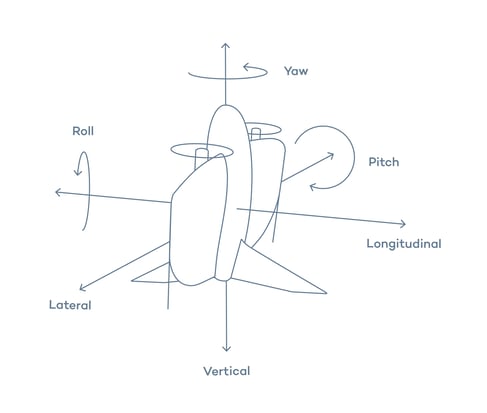Flying in windy conditions
WingtraOne handles wind differently than most drones due to its unique VTOL tailsitter design. This article describes the optimal configuration of the drone, related to the operator, in order to safely achieve the highest data quality.
WingtraOne can be operated safely within specified wind bounds without considering wind direction during flight planning. The specified wind limitations can be found in the Environmental conditions article.
In case you fly far away (>1-2 km) in windy conditions, return to home (RTH) will be automatically triggered earlier, based on the amount of power required for WingtraOne to return to home safely. During the flight, if WingtraOne senses that the wind is above 12m/s continuously (more than 30 seconds), automatic RTH will be triggered for safety reasons. Wind gusts above 12m/s are not problematic. WingtraOne will RTH safely in winds of up to 18m/s.
Flight behavior and data quality are influenced by wind and can be optimized if you follow some recommendations during the following different stages.
Take-off
In case of strong continuous wind (5-8m/s at ground level), follow the below mentioned recommendations when defining the home point.
Keep the drone out of the wind or with the batteries inserted in the drone while you prepare the flight plan. Move it to the take-off position, when you are ready to start flying. In order to reduce drift before and right after take-off, place the wing parallel to the wind to minimize the wind attack surface.
The drone placement does not need to be adjusted to fit the transition direction, because the orientation will automatically adjust during ascending. You will need to reserve more space on take-off in high winds. Make sure to not stand in the wind current behind the drone within 15m.
For take-off and landing, it is important to maintain a safe distance from wind barriers or obstacles, such as buildings, as proximity to these involves turbulence that can cause the aircraft to drift uncontrollably. It is NOT recommended to fly near wind barriers on the ground or land near objects placed to reduce wind. Let the WingtraOne naturally adjust direction into the headwind and ride the wind current free of uneven turbulence during the descent.
We recommend measuring the wind on the ground. Do not fly if you measure more than 8 m/s (19 mph) over 30 seconds (sustained wind)!
Transition
Within the specified wind bounds, WingtraOne can handle all orientations, but we typically want it to transition into the wind given the choice. Safety and adhering to regulation should be the first concern, but if given the option, try to transition into the wind. During back transition in high winds, it can happen that WingtraOne flies slightly over the home point, make sure there is some extra space. In this case, the drone will move back over the home position before descending.
In-flight
Set the flight direction such that the sweeps are flown perpendicular to the wind in order to maintain a consistent speed during data collection. Try to reduce heavy tailwinds or wind blowing from behind during flight as it can lead to missing images.
In case of heavy elevation change, prioritize flying parallel with contour lines over any adjustments for wind in case both are not possible to account for in your planning. The consequences of less-than-ideal positioning for wind are potentially less than flying too close to the ground!
Direction: Turning into the wind
When choosing the direction of the flight it's important to look at the arrows that show the trajectory of the drone in the sweeps. As the drone will make a turn after each line, it will be more efficient to turn into the wind.
Automated landing
After back transition, WingtraOne orientates itself so that the top cover is facing into the wind. The WingtraOne will continue to naturally turn into the headwind dynamically to guarantee a smooth landing. This is why it might turn around its vertical axis during descent. The transition height should be at least 30 m so that the drone can align itself into the wind. If the transition height is lower the drone does not have enough time to align correctly and tipping chances are increased.

Automated landing is strongly recommended! Only switch to manual if the drone is about to collide with obstacles or people, or if the drone is no longer on the desired path!
Check out our wind video to learn more about the performance of WingtraOne in wind and best practices. More general information about drones in wind can be found on our blog. Learn why all mapping drones will face limits in wind and how WingtraOne is designed to deliver robust, reliable data within its published wind ranges.